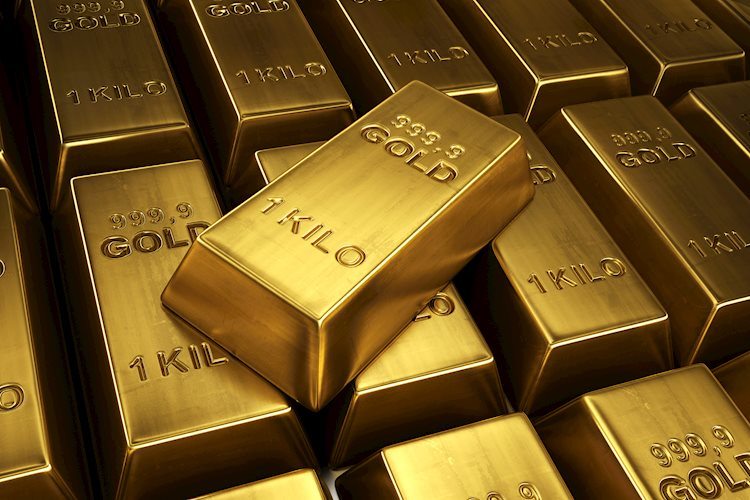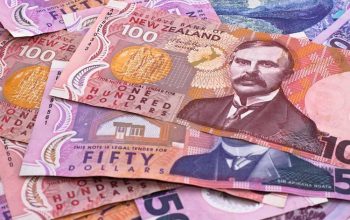- Gold price bounces from daily lows of $2,356, now at $2,385.
- Fed’s preferred inflation gauge shows mixed results, edging closer to the 2{721fc769be108e463fe4e33f629fb22fe291c423a7a69eaaf65dcb28e9b05dea} target.
- US Treasury yields slump as bonds rally, signaling potential for multiple Fed rate cuts this year.
Gold price makes a U-turn after diving to two-week lows of $2,353 edges higher some 0.80{721fc769be108e463fe4e33f629fb22fe291c423a7a69eaaf65dcb28e9b05dea} as market participants seem secure the Federal Reserve will lower interest rates at the September meeting, following a soft inflation report. The XAU/USD trades at $2,385 after bouncing off daily lows of $2,356.
The US Bureau of Economic Analysis (BEA) revealed that the Fed’s favorite inflation gauge, the Personal Consumption Expenditure Price Index (PCE), ticked a tenth higher monthly than May’s data. It dipped as foreseen in the twelve months to June, though it’s at the brisk of hitting the Fed’s 2{721fc769be108e463fe4e33f629fb22fe291c423a7a69eaaf65dcb28e9b05dea} goal.
June’s Core PCE edged up a tenth every month, while year-over-year (YoY) was unchanged, above projections.
Following the data, US bonds rallied, and consequently, US Treasury yields slumped, with the 10-year note sliding four and a half basis points to 4.202{721fc769be108e463fe4e33f629fb22fe291c423a7a69eaaf65dcb28e9b05dea}.
Sources cited by Reuters noted, “Today’s mixed-to-weaker U.S. data suggests inflationary pressures and economic activity are waning, paving the way for the Fed to cut rates twice this year.”
Next week, the Federal Reserve will make its latest monetary policy decision. The central bank is expected to keep rates unchanged, but the meeting could pave the way for the first cut at the September meeting.
Daily digest market movers: Gold price bounces off weekly lows
- The US PCE in June rose by 0.1{721fc769be108e463fe4e33f629fb22fe291c423a7a69eaaf65dcb28e9b05dea} month-over-month (MoM) and 2.5{721fc769be108e463fe4e33f629fb22fe291c423a7a69eaaf65dcb28e9b05dea} year-over-year (YoY); both figures were as expected, with the annual rate falling from 2.6{721fc769be108e463fe4e33f629fb22fe291c423a7a69eaaf65dcb28e9b05dea}.
- Core PCE expanded by 0.2{721fc769be108e463fe4e33f629fb22fe291c423a7a69eaaf65dcb28e9b05dea} MoM, exceeding estimates and May’s figure. On an annual basis, Core PCE rose by 2.6{721fc769be108e463fe4e33f629fb22fe291c423a7a69eaaf65dcb28e9b05dea}, higher than forecasts and unchanged from the prior month’s reading.
- The University of Michigan Consumer Sentiment survey, in its final reading, jumped to 66.4, missing projections of 66.
- Inflation expectations for one year decreased from 3{721fc769be108e463fe4e33f629fb22fe291c423a7a69eaaf65dcb28e9b05dea} to 2.9{721fc769be108e463fe4e33f629fb22fe291c423a7a69eaaf65dcb28e9b05dea}, while for a five-year period, they remained unchanged at 3{721fc769be108e463fe4e33f629fb22fe291c423a7a69eaaf65dcb28e9b05dea}.
- Data from the Chicago Board of Trade (CBOT) shows that traders are pricing in 55 basis points (bps) of easing towards the end of the year, as indicated by the December 2024 fed funds rate futures contract.
Technical analysis: Gold price climbs but remains below $2,400
Gold prices remain upward biased, snapping two days of losses and forming a ‘bullish harami’ two-candle chart. Momentum hints that buyers are still in charge, as depicted by the Relative Strength Index (RSI), which pierced above the 50-neutral line, opening the door for further upside.
XAU/USD buyers must reclaim $2,400 before pushing prices above the psychological $2,450 area. A breach of the latter will expose the all-time high (ATH) at around $2,483, followed by the $2,500 mark.
On the flip side, if XAU/USD continues to edge lower and drop below the 50-day moving average (DMA) at $2,359, further losses are on the cards. The next support would be the July 25 daily low of $2,353. Once those levels are removed, the 100-DMA would be up next at $2,324, ahead of diving to the $2,300 mark.
Gold FAQs
Gold has played a key role in human’s history as it has been widely used as a store of value and medium of exchange. Currently, apart from its shine and usage for jewelry, the precious metal is widely seen as a safe-haven asset, meaning that it is considered a good investment during turbulent times. Gold is also widely seen as a hedge against inflation and against depreciating currencies as it doesn’t rely on any specific issuer or government.
Central banks are the biggest Gold holders. In their aim to support their currencies in turbulent times, central banks tend to diversify their reserves and buy Gold to improve the perceived strength of the economy and the currency. High Gold reserves can be a source of trust for a country’s solvency. Central banks added 1,136 tonnes of Gold worth around $70 billion to their reserves in 2022, according to data from the World Gold Council. This is the highest yearly purchase since records began. Central banks from emerging economies such as China, India and Turkey are quickly increasing their Gold reserves.
Gold has an inverse correlation with the US Dollar and US Treasuries, which are both major reserve and safe-haven assets. When the Dollar depreciates, Gold tends to rise, enabling investors and central banks to diversify their assets in turbulent times. Gold is also inversely correlated with risk assets. A rally in the stock market tends to weaken Gold price, while sell-offs in riskier markets tend to favor the precious metal.
The price can move due to a wide range of factors. Geopolitical instability or fears of a deep recession can quickly make Gold price escalate due to its safe-haven status. As a yield-less asset, Gold tends to rise with lower interest rates, while higher cost of money usually weighs down on the yellow metal. Still, most moves depend on how the US Dollar (USD) behaves as the asset is priced in dollars (XAU/USD). A strong Dollar tends to keep the price of Gold controlled, whereas a weaker Dollar is likely to push Gold prices up.



